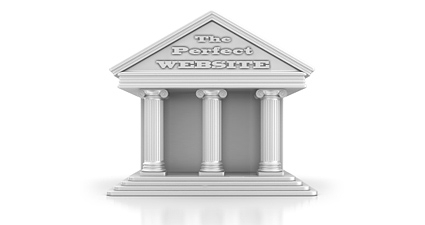Three Pillars for Building the Perfect Website

Your website is your virtual storefront to the world. As such, you will want visitors to have a good experience so that they will come in and buy your products, or call you for your service. Whether you are building your own website or having someone else do it for you, here are three key components that will need your attention when you are planning the site.
Content
Content is the information your are providing to visitors, in the form of text, images and media. For most small businesses, basic content includes telling the visitor what you sell, where you are located, hours of operation and how to contact you. Other useful information includes the history of your company (emphasizing experience), the company’s philosophy or mission (communicates values that your visitors can relate to), and your employees (helps your visitors connect with staff). Providing this type of content is not only beneficial to potential clients, but it also serves to help recruit future employees by allowing them to learn about their future workplace.
Allowing two-way communication between you and your audience is also an important aspect as it builds a sense of community around your business and provides direct feedback to how well you are serving your customers. This can be achieved by including educational or promotional blog articles (like this one!) where you can highlight new products or your expertise. Blogs allow your visitors to see what’s new and gives them the opportunity to comment on what you say.
Content should be brief and easily absorbed as people tend to skim rather than actually read a website. So make sure you get to the point and break the content into headings so that the reader can easily get the ‘gist’ of your message. Avoid lots of text with really small fonts.
Design
Design is very important in a website. Good design will complement the text to evoke an emotion and communicate a message without the visitor really noticing. A website for a day spa might communicate serenity; an amusement park website should be fun and whimsical; a tattoo parlour would be edgy and cool.
Design encompasses everything from the colours and patterns used, to how the menus, text and images are presented and arranged. The layout of the text and images should be nicely aligned, have continuity, and appear organized like a professional newspaper or magazine.
A common tendency for home-made websites is to use many different font colours, sizes, and types to draw attention to the message and to make up for the lack of design. Remember: regardless of the feeling you want your visitors to experience on your website, tacky shouldn’t be one of them.
Function
The function of your website includes everything from navigability of your site (is it easy for you visitors to find the information they want?) to the speed it takes for images to load. You want visitors to be able to browse swiftly and easily and to find what they are looking for without too much trouble.
Consider using the “two click” rule where it takes no more than two clicks for the visitor to reach the information they need from anywhere in the website. Be cautious of loading up your website with features such as large-size graphic files, moving images and video as they may require additional software that the visitor doesn’t have or want, and might cause them to leave the sight prematurely. The increasing popularity of mobile devices (such as iPhones) means that your website needs to display properly on both these and regular desktop/laptop monitors.
Work closely with your web developer/designer to get the content, design and function that accurately reflects your great business. We’re confident that your current and future clients will respond positively!
Let us know about your experiences by leaving a comment!

